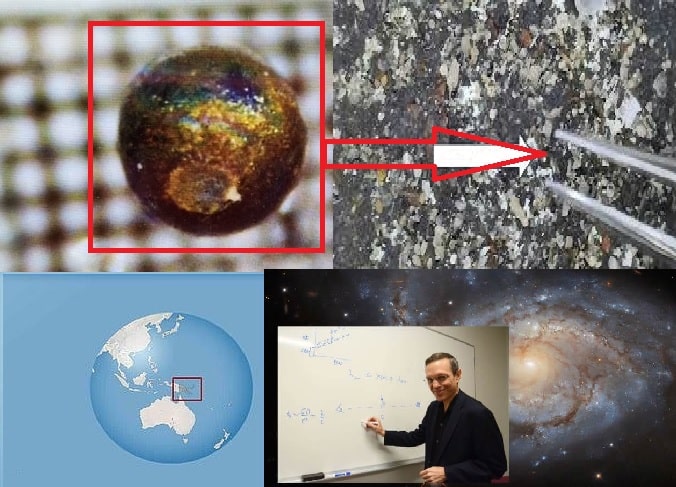|
In 2014 an unusual meteor hit the Pacific Ocean off the coast of Papua New Guinea . A team of Harvard Scientists studying the meteor found that 700 tiny fragments from this meteor did not match any of the existing known alloys from our solar system. 50 of the spherical iron fragments were sent to a lab in Berkley, California which determined that the material was 'anomalous' and not something that could have come from a naturally-produced meteorite Avi Leob, a Professor and theoretical astrophysicist at Harvard stated that based on an early analysis of the metallic spheres, he beleived them to be interstellar in origin. Other Scientists challenge Loeb's assertions, saying that he lacked evidence to back them up and that some indications point to the possibility that the spheres may have come from human produced pollution. Data from several stations in Australia and the south Pacific designed to pickup sounds from nuclear tests, led opposed researchers to speculate that the location Loeb and his team should have investigated was about 100 miles from the site they chose. As for the spherules they found, naysayers claim they likely came from ordinary meteorites or human pollutants. Loebs team discovered the meteor in 2019, after researching databases for space debris that had landed on Earth from other than normal trajectories. Their analysis determined that the meteor was traveling too fast to have come from within our solar system, leading to speculation that it was a probe from an alien craft. |
Harvard professor’s search for remains of interstellar object that crashed into ocean concludes — here’s what was found
A Harvard University physics professor just concluded a two-week project dredging the depths of the Pacific Ocean in search of the remains of the first confirmed interstellar object to fall to Earth — an object he hypothesized could be a form of extraterrestrial technology.
Professor Avi Loeb — famous for his 2017 stance that the bizarre interstellar object ʻOumuamua could be an extraterrestrial object passing Earth — announced that his research team wrapped up its $1.5 million expedition and that it had collected 35 milligrams of promising material. - Full Article @ NY Post
An Interstellar Meteor Struck the Earth in 2014, and now Scientists Want to Search for it at the Bottom of the Ocean
Back in 2014, an object crashed into the ocean just off the coast of Papua New Guinea. Data collected at the time indicated that the meteorite just might be an interstellar object, and if that’s true, then it’s only the third such object known (after Oumuamua and Borisov), and the first known to exist on Earth. Launching an undersea expedition to find it would be a long shot, but the scientific payoff could be enormous.
Dubbed CNEOS 2014-01-08, the candidate interstellar object is believed to have measured about a half-meter wide, and its potentially interstellar origins were first recognized by then graduate student Amir Siraj and Harvard professor Avi Loeb. Using catalog data regarding the object’s trajectory, Siraj and Loeb concluded that it might be from beyond our solar system due to its unusually high heliocentric velocity – in other words, it was moving at speeds that suggest it may not be bound within the Sun’s gravity well. Full Article @ Universe Today
Updated Formula on Alien Intelligence Suggests We Really Are Alone in the Galaxy
An adjustment to the famous Drake Equation could radically refine estimates of intelligent civilizations in our Galaxy
Astronomer Frank Drake formulated his influential equation in 1961 to estimate the number of civilizations in the Milky Way capable of communicating with us. Our understanding of planetary science has changed a lot since then, leading a team of scientists to propose a pair of important adjustments that produce an answer that could explain the Great Silence. Read More
60 Advanced Alien Civilizations May Exist In Our Galaxy, Scientists Say
Are there advanced alien “supercivilizations” lurking in our galaxy? If there are, they may use massive megastructures, such as a “Dyson sphere,” to harvest solar energy directly from a star. As first reported in the New Scientist, a recent study of millions of stars revealed 60 that displayed characteristics that could potentially be indicative of just such a device - Read More

